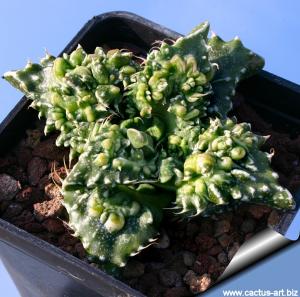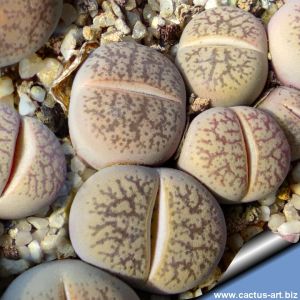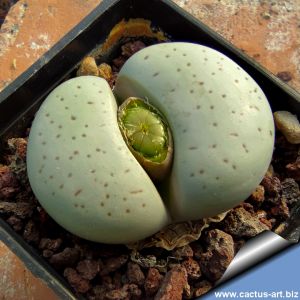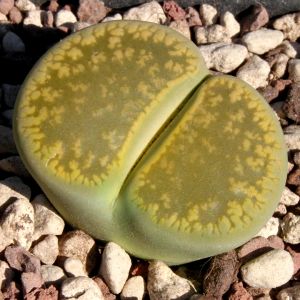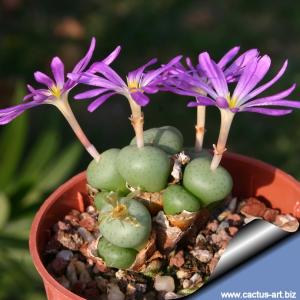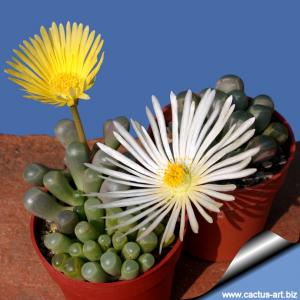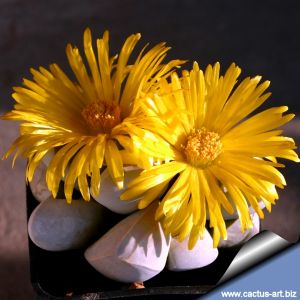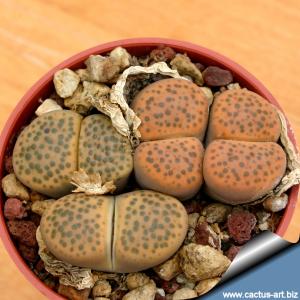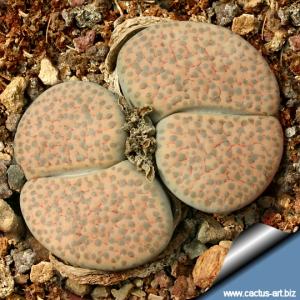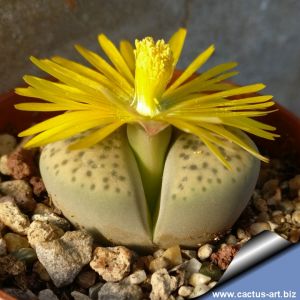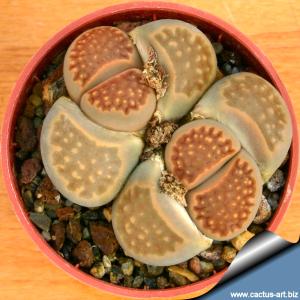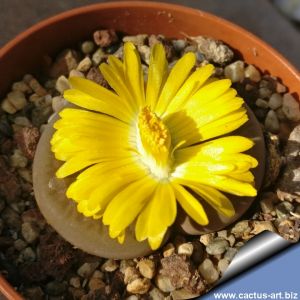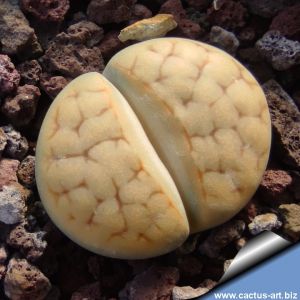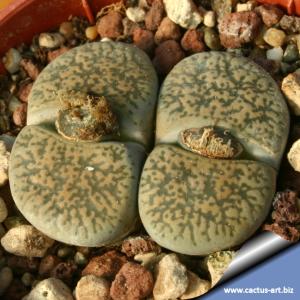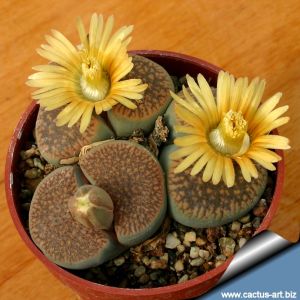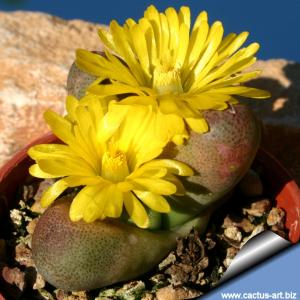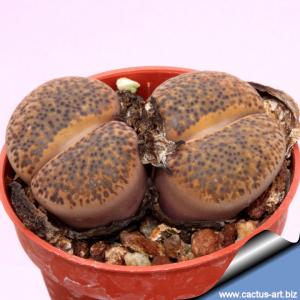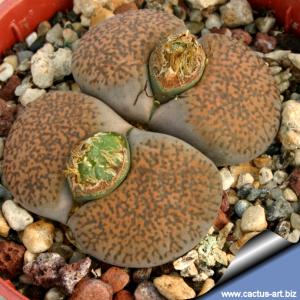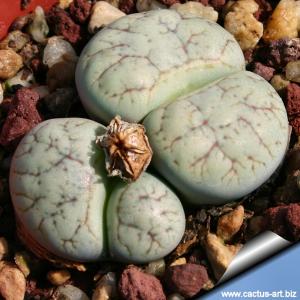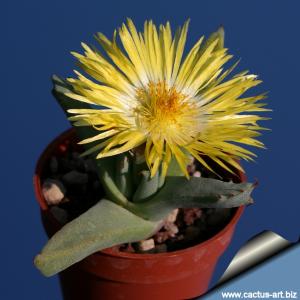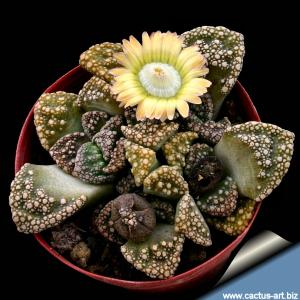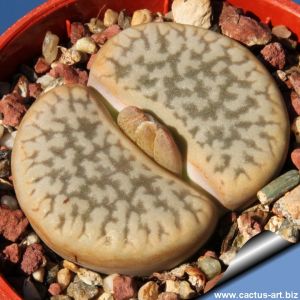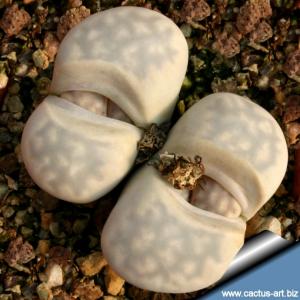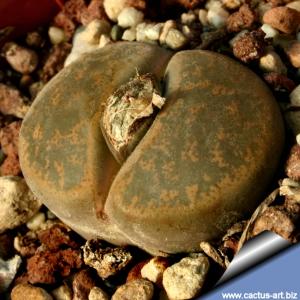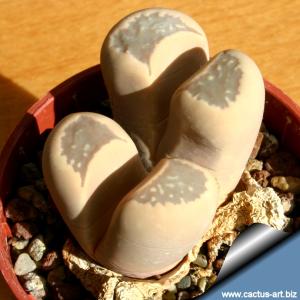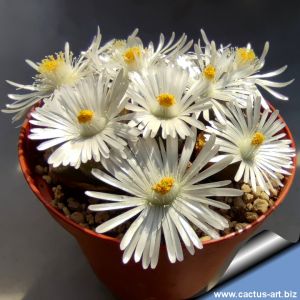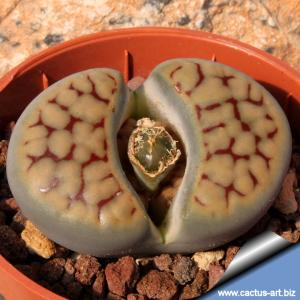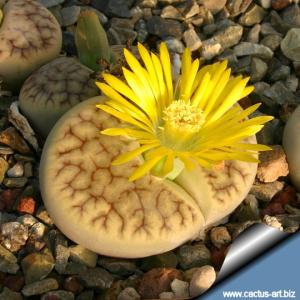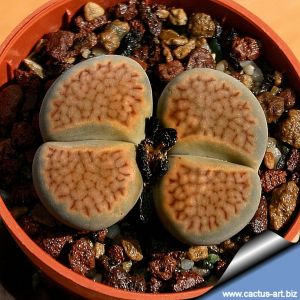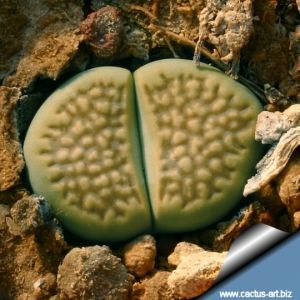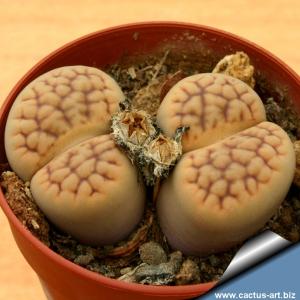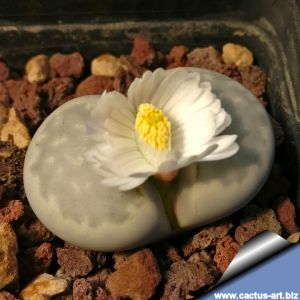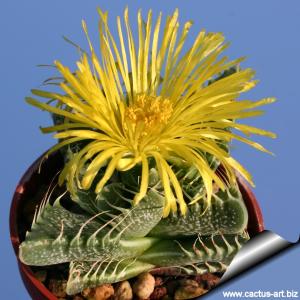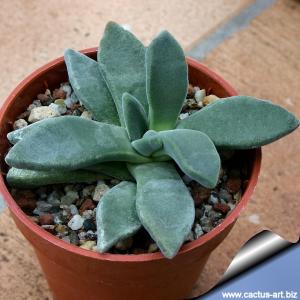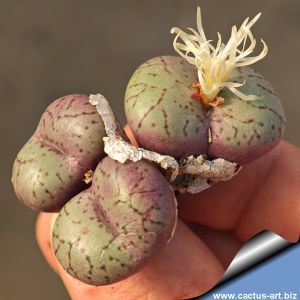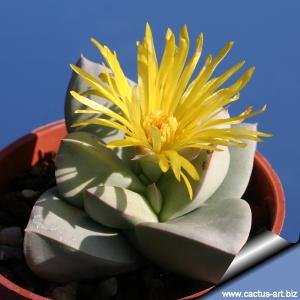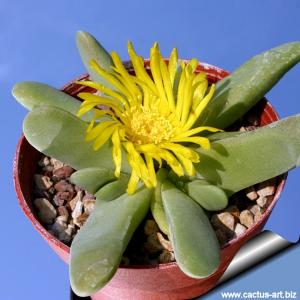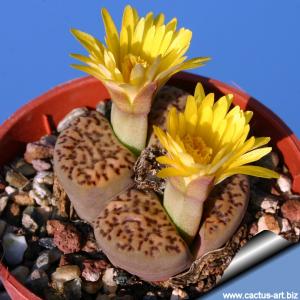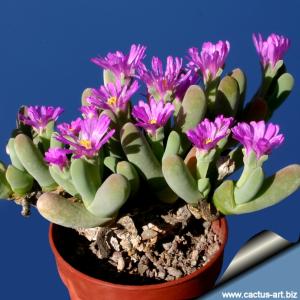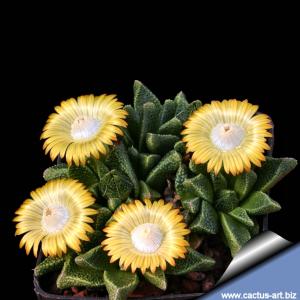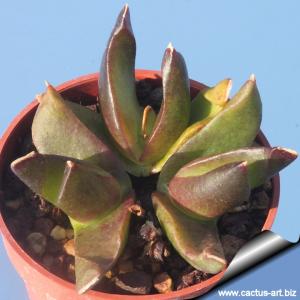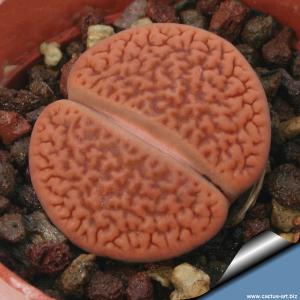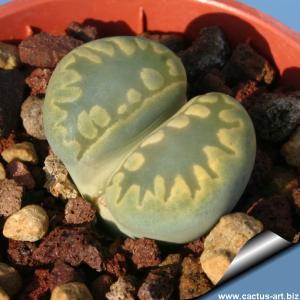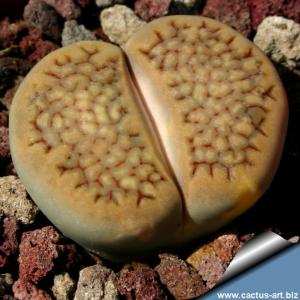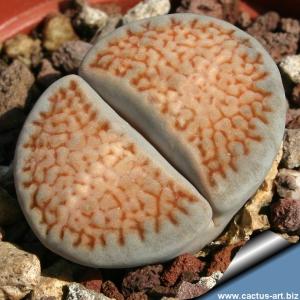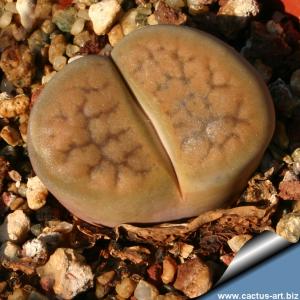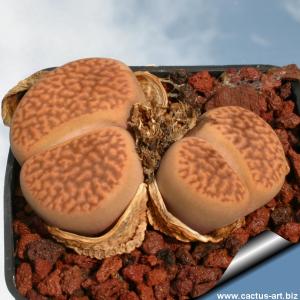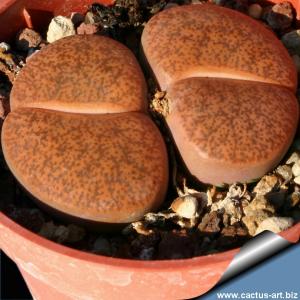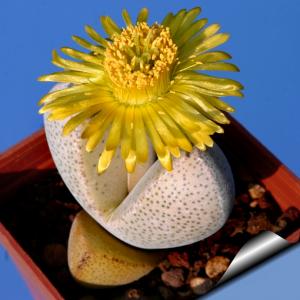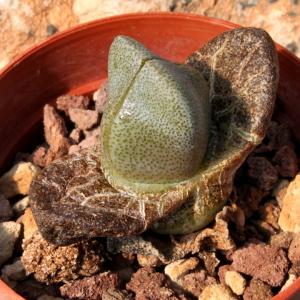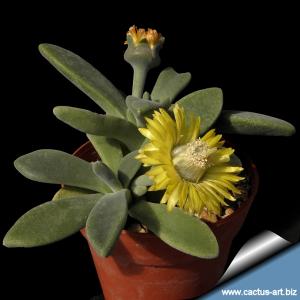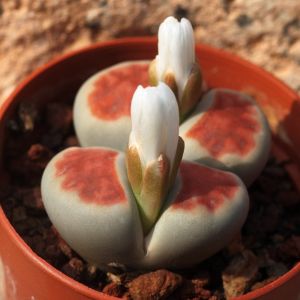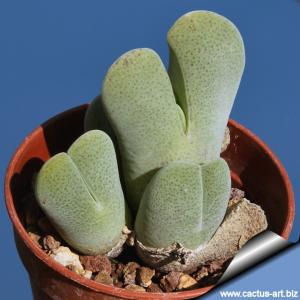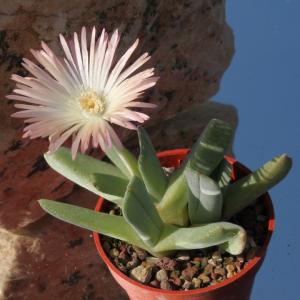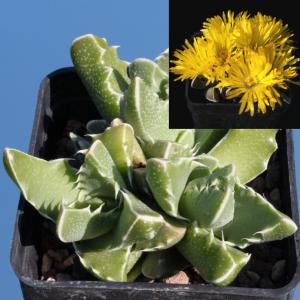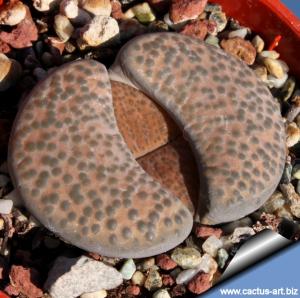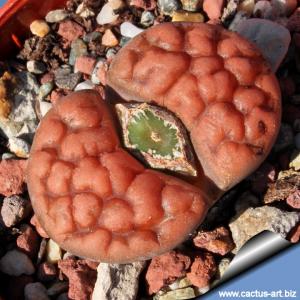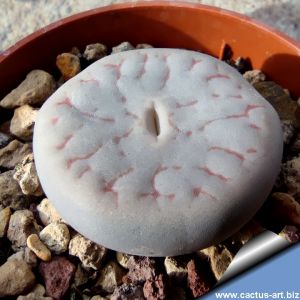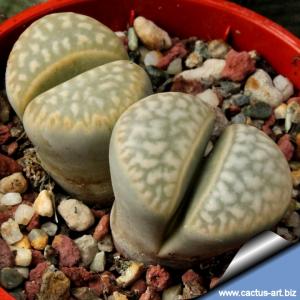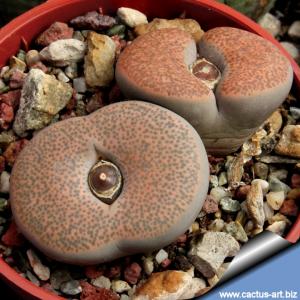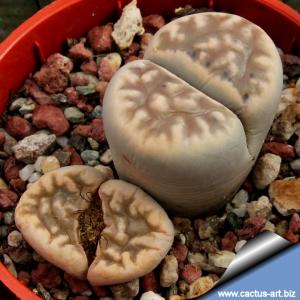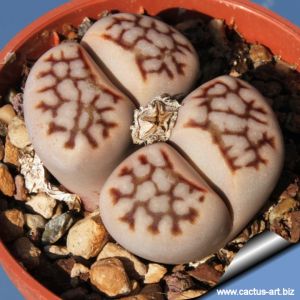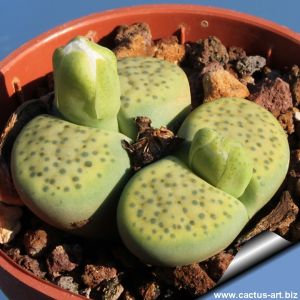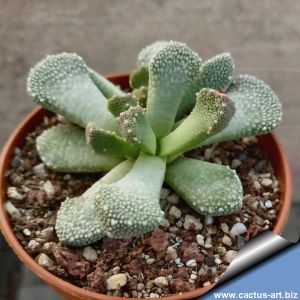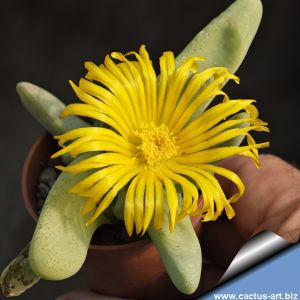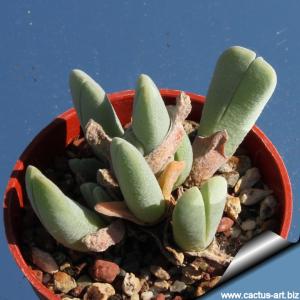-
1
Instantly recognizable—its upper leaf surface is thickly studded with prominent white tubercles. Truly distinctive.
-
2
Back cross between a Lithops and a Dinterops (Lithops x Dinteranthus vanzylii hybrid). Surprising and easily grown.
-
3
Lithops like with ivory rocklike top, red lines and dots.
-
4
Green/yellow body and yellow flowers.
-
5
C. minutum is aptly named for it is only 1 cm tall body, it is in fact one of the smallest or dwarf succulent that offsets readily forming small clumps. Produces a profusion of violet flowers in autumn.
-
6
Commonly called "Baby Toes" has small club-shaped leaves with fenestrate ends and form large clumps by offsetting. Flowers colours range from pure white to rich golden yellow.
-
7
big form, lovely bluish chunks .
-
8
Body ranging from ochre yellow to brick red, marked with extra-large dark dots.
-
9
Pale form with grey body and pinkish-milky-grey top with (usually) a few thin red lines and grey dots.
-
10
Very peculiar small convex form with a relatively smooth surface without the large raised dusky dots which characterize the type variety.
-
11
Reticulated upper surface in grey-orange, ochre, and red-brown tones. Produces white flowers in autumn.
-
12
-
13
Rough orange rocks.
-
14
-
15
-
16
This species has very handsome, soft to the touch and shining body with tiny dots all over. It stays small (2-3 cm wide) and forms mounds of purple or reddish-brown grapes.
-
17
-
18
Fne speckles and lines.
-
19
Very rare and beautiful - tiny with clear deep and dark lines.
-
20
Gray-green leaves, slightly warty, tipped with slender reddish-green teeth resembling tomato hornworms—a distinctive texture that makes the plant instantly recognizable.
-
21
Basal rosettes of blue-green to grey leaves topped with variable whitish, ochre, red or bluish crusts. Confined to limestone habitats, it is a remarkable case of plant camouflage, merging seamlessly into its environment.
-
22
Var. susannae is distinguished by a less reticulate top in various shades of obscurely translucent grey-green, greenish grey, brown, or orange-brown, sometimes more intensely colored along the margins. Yellow flowers in autumn.
-
23
They have a nearly white stonelike body and top with pale grey blushes, some specimens are opaque whitish-grey and almost uniform in colour. They produce a single white daisy-like flower that emerges from the fissure from mid-summer through Autumn.
-
24
-
25
Grey black top, intricate. Very pretty lines.
-
26
Raised grey-pink lobes marked by zigzagging lines.
-
27
This is one of the easiest species. Some people consider it one of the most tolerant of overwatering.
-
28
mustardy tops .
-
29
-
30
Warm orange colors, truncate.
-
31
Beautiful! Light brown window with thin dark brown lines - one of the best!
-
32
Intermediate between L. salicola and L. halli it has a large fine reticulate brown windows.
-
33
Pale green freak.
-
34
Nice form of Lithops hookeri with rich orange coloration characterized by large island and coarse network of grooves on the top face. Flowers are Yellow in late summer.
-
35
The more distinctive feature of this "pallid" greyish-white plant is a brown 'lip-smear' along the inner margins. The lip-smear occurs occasionally as a narrow edging or lining all along the outer margins.
-
36
Popular clump-forming species with thick, green triangular leaves with up to ten pointed, soft recurved "teeth" along the edges, making them look like open jaws. Flowers are yellow and last for a very long time in autumn.
-
37
Long, thick taproot that can be partially raised from the substrate to create a miniature succulent bonsai effect. Grey, velvety leaves covered in soft down. Bears yellow, honey-scented flowers.
Cold hardy to -23 °C.
-
38
“Spectabile” means “the best.” Small succulent bodies bear refined markings, varying in both patterning and floral color intensity. Its night-blooming flowers release an exquisite perfume.
-
39
Very nice free blooming succulent. Often found growing among quartzite stones.
-
40
-
41
Medium-small Lithops. The face is opaque slightly rugose with channels reduced to mini-windows. Shoulders, margins and islands orange-brown. Windows and channels transluscent reddish-brown with dull blood-red rubrications.
-
42
-
43
Great succulent bonsai: this species is sought after by bonsai impassionate as it will form large rootstock (caudex) in time, the thick root and trunk eventually can be trained to the shape of a odd mini-bonsai.
-
44
Very wide jagged windows.
-
45
A dark form with mottled orange-grey top.
-
46
-
47
Robust. Light hazelnut with mahogany-colored reticulation.
-
48
-
49
This cultivar comes from a unique specimen collected by Collected by D.T. & N.A. Cole. Its peculiarity are the dark metallic greyish-green windows with pale creamy-green margin, indentation and island.
-
50
-
51
-
52
Dark rusty grey body.
-
53
-
54
-
55
Dinteranthus microspermus is a small stemless succulent that grows above ground. As it ages it forms small compact groups with 3-7 branches up 2 to 3 cm high, each with a single leaf-pair in the resting state.
-
56
This is s a mimicry plant know as "African living rock" or “Splits rock” because it imitates split chunks of granite (especially if grown in full blazing sun) It resemble stones so closely that it can only be found with difficulty.
-
57
This delicate succulent features fleshy, fuzzy leaves and strikingly large, bright yellow flowers that unfurl in the late afternoon. Blooming between 3 p.m. and 9 p.m., the flowers open at twilight, creating an enchanting display.
-
58
Sensu Dinter! Very nice bright rusty red top, very distinctive! One of the best!
-
59
-
60
Beautiful white & pink flowers in spring.
-
61
-
62
-
63
Rusty, deep lines.
-
64
Many red spots.
-
65
-
66
Colored like earth, densely speckled with light dots on an ochre-grey apex. Bears a bright yellow flower.
-
67
-
68
Beautiful body with bright branched pattern of lines
-
69
Bright chartreuse body with a smooth surface dotted in dark olive-green specks. Produces white flowers.
-
70
Leaves widen toward a more or less triangular or recurved apex. Thick, light bluish-green, both surfaces finely warty, upper surface with white crust. Margin bears 5–6 evenly spaced pink tubercles.
-
71
A miniature stemless succulent forming clusters, with soft, club-like or tongue-like leaves pressed to the soil in two opposite rows. Colour ranges from grey-green to blue-green, whitening under intense light. Produces large yellow blooms in autumn.
-
72
Purple flowers, smooth leaves.

